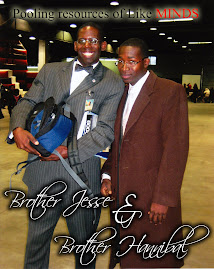Job Losses Show Wider Racial Gap in New York

Ozier Muhammad/The New York Times
Roger Richardson, 47, left his sales job at Home Depot in June to look for work after his hours were cut by more than half.
Unemployment among blacks in New York City has increased much faster than for whites, and the gap appears to be widening at an accelerating pace, new studies of jobless data have found.
While unemployment rose steadily for white New Yorkers from the first quarter of 2008 through the first three months of this year, the number of unemployed blacks in the city rose four times as fast, according to a report to be released on Monday by the city comptroller’s office. By the end of March, there were about 80,000 more unemployed blacks than whites, according to the report, even though there are roughly 1.5 million more whites than blacks here.
Across the nation, the surge in unemployment has cut across all demographic lines, and the gap between blacks and whites has risen, but at a much slower rate than in New York.
Economists said they were not certain why so many more blacks were losing their jobs in New York, especially when a large share of the layoffs in the city have been in fields where they are not well represented, like finance and professional services. But in those sectors, the economists suggested that blacks may have had less seniority when layoffs occurred. And black workers hold an outsize share of the jobs in retailing and other service industries that have been shrinking as consumers curtail their spending.
“African-Americans have been hit disproportionately hard,” said Frank Braconi, the chief economist in the comptroller’s office. “The usual pattern is that the unemployment rate among African-Americans tends to be about twice as high as for non-Hispanic whites, but the gap has widened substantially in the city during the past year.”
Historically, the unemployment rate for blacks has always been higher than for whites. But since the start of the recession, in December 2007, the overall rate has risen by 4.6 percentage points — driving the black unemployment rate as high as 15 percent in April. The jobless figures among blacks became enough of a national issue that at a White House news conference last month, President Obama was asked what he could do to “stop the bloodletting in the black unemployment rate.”
The president said that to help any community, whether it be blacks, Latinos or Asians, he needed to “get the economy as a whole moving.”
“If I don’t do that, then I’m not going to be able to help anybody,” the president added.
In the first quarter of 2008, the rate of joblessness among blacks nationwide was 8.9 percent, compared with 4.8 percent for whites; in the first quarter of 2009, the rate for blacks had risen to 13.6 percent, while the rate for whites had gone to 8.2 percent.
But policy experts and public officials expressed concern over the much sharper trend in New York, where the city’s overall unemployment rate hit a 12-year high of 9 percent in May. The jobless rate for all blacks in the city rose to 14.7 percent in the first quarter, up from 5.7 percent in the first quarter of 2008. During the same period, the unemployment rate for white New Yorkers rose only moderately, to 3.7 percent from 3 percent, suggesting that black residents of the city were four times as likely as whites to be out of work, he said.
At a work force center in the Bronx on Friday, Ahmadi Scruggs, 32, said he was dismissed in April from his job in customer service at a New York bank that cut its payroll after many of the mortgages it made went sour. Mr. Scruggs, who is black and lives in Soundview, in the Bronx, said he did not think that the layoff, which followed a hiring freeze, was racially motivated, but said that it appeared to have a disparate effect on whites and minority workers.
“My department was mostly black and Hispanic,” Mr. Scruggs said. “Management was mostly white and they didn’t get let go. You would think they would trim the fat from the top, not the bottom, because it’s the lower-wage workers that do the bulk of the work.”
Mr. Scruggs, who is married and has three children, said his three-month severance package had run out. Mr. Scruggs said he was trying to have his unemployment benefits extended so that he could begin studying to become a surgical technician.
“I might as well invest in myself for the next year and then get back in the work force,” he said.
Last month, Roger Richardson, who lives in the Mott Haven section of the Bronx, left his sales job at a Home Depot store after his hours were cut by more than half. “I had to find something else because my bills surpassed my salary,” said Mr. Richardson, who is black.
The recession has also worsened the unemployment rate in New York among other ethnic groups, although none as sharply as blacks. Among Hispanics, the rate rose to 9.3 percent in the first quarter of 2009 from 6.4 percent in the first quarter of 2008; among Asians and other ethnic classifications, the rate rose to 7.1 percent from 5.5 percent.
David R. Jones, president and chief executive of the Community Service Society, which lobbies on behalf of low-income workers, said he did not “think this recession has gone out equally.”
- 1
- 2
Page 2 of 2)
“Low-wage workers and workers who lack skills are really getting hit hard,” he said. “These are the workers who are sort of fungible. They lose their jobs very quickly, particularly in retail, the people who move boxes and do unskilled work. There are large numbers of African-Americans in that sector.”
Manufacturing, which has shed more jobs than any other sector of the city’s economy, had become a mainstay for black workers, Mr. Jones said. Government jobs had also become a prime source of solid, stable work for many blacks in the city, he added. But lately there have been cutbacks there, too, as falling tax revenue has forced the paring back of budgets.
James Parrott, the chief economist for the Fiscal Policy Institute, a liberal research group, pointed out that employment with the Postal Service in the city has declined by about 2,000 jobs, many of which were held by blacks. City officials have been wringing their hands about the mass firings that have occurred in high-paying industries like financial and legal services, consulting and publishing, but those cutbacks account for less than half of the 108,000-job decline since employment in the city peaked in August.
In comparing jobs data for the 12 months through April 30 with the previous one-year period, Mr. Parrott found that white New Yorkers had gained jobs while blacks and other minority residents had lost them. He was seeking to compare the recession with the end of the hiring boom that preceded it, though employment did not begin to fall in the city until after the Lehman Brothers investment bank collapsed in September, a full nine months after the recession began to take its toll in other parts of the country.
Still, Mr. Parrott’s analysis painted a stark picture of how uneven the effects have been for whites, blacks and members of other minorities. His figures show that whites gained about 130,000 jobs in the year that ended April 30 over the previous 12 months, but blacks, Hispanics and Asians all lost jobs during that period. Employment fell by about 17,000 jobs for blacks, 26,000 jobs for Hispanics and 18,000 for Asians and other ethnic groups, the data show.
“That’s a black-and-white employment picture,” Mr. Parrott said. “It’s like night and day over the 12 months. “There’s a real racial shift taking place in the city’s labor market in the past year.”
Aldumen Gomez said he had firsthand experience with the trend. Mr. Gomez, 25, was a nursing assistant in a Bronx nursing home for more than a year until it closed in January, he said.
“These were the jobs you used to rely on, but now because of all the cuts, it’s not like that,” said Mr. Gomez, who is part Haitian and part Dominican. “At the company I worked for, the ones who did get to keep their jobs were people at management levels who were mostly white. They were transferred to other nursing homes.”
Mr. Gomez has been studying political science at night at Baruch College, hoping to go on to law school. But he said he feared that he might not be able to keep paying for school — and living in student housing in Manhattan — unless he finds another job soon.










































No comments:
Post a Comment